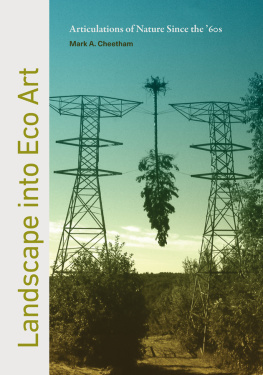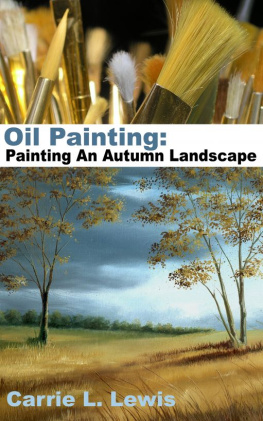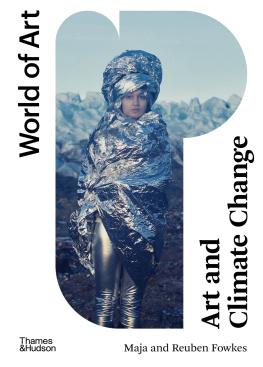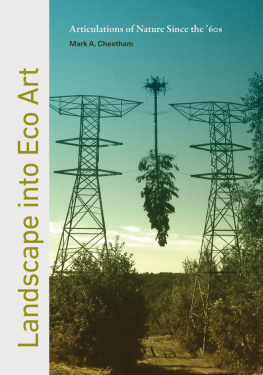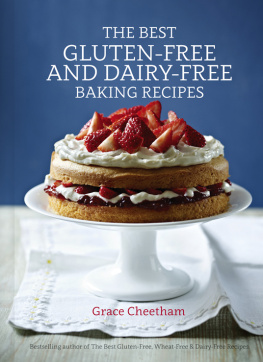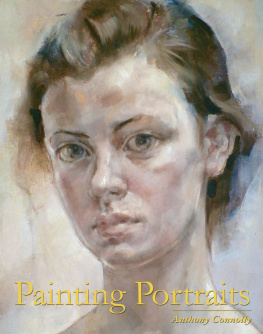LANDSCAPE INTO ECO ART
LANDSCAPE INTO ECO ART
Articulations of Nature Since the 60s
Mark A. Cheetham
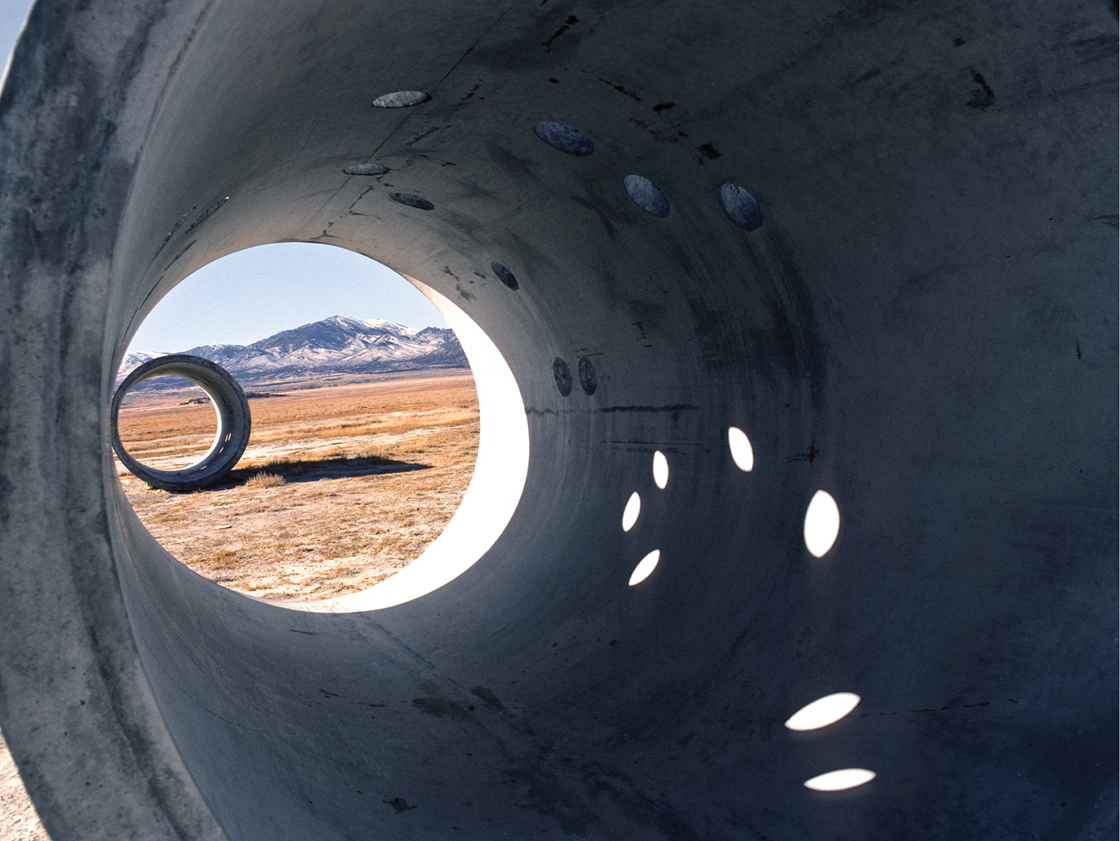
THE PENNSYLVANIA STATE UNIVERSITY PRESS UNIVERSITY PARK, PENNSYLVANIA
Publication of this book has been aided by a grant from the Millard Meiss Publication Fund of the College Art Assocation.

LIBRARY OF CONGRESS CATALOGING-IN-PUBLICATION DATA
Names: Cheetham, Mark A. (Mark Arthur), 1954 author.
Title: Landscape into eco art : articulations of nature since the 60s / Mark A. Cheetham.
Description: University Park, Pennsylvania : The Pennsylvania State University Press, [2018] | Includes bibliographical references and index.
Summary: Explores the practices of ecological art, a genre addressing the widespread public concern with rapid climate change and related environmental issues. Examines connections and divergences between contemporary eco art, land art of the 1960s and 70s, and the historical genre of landscape paintingProvided by publisher.
Identifiers: LCCN 2017041163 | ISBN 9780271080031 (cloth : alk. paper)
Subjects: LCSH: Ecology in art. | Earthworks (Art) | Landscape painting.
Classification: LCC N8217.E28 C49 2018 | DDC 700/.46dc23
LC record available at https://lccn.loc.gov/2017041163
Copyright 2018 Mark A. Cheetham
All rights reserved
Printed in Canada
Published by The Pennsylvania State University Press, University Park, PA 168021003
The Pennsylvania State University Press is a member of the Association of American University Presses.
It is the policy of The Pennsylvania State University Press to use acid-free paper. Publications on uncoated stock satisfy the minimum requirements of American National Standard for Information SciencesPermanence of Paper for Printed Library Material, ANSI Z39.481992.
FRONTISPIECE: Nancy Holt, Sun Tunnels, 1976 (detail). Great Basin Desert, Utah. Photo: Nancy Holt. Courtesy of the Holt-Smithson Foundation. 2016 Estate of Nancy Holt / SODRAC, Montreal / VAGA, New York.
For Elizabeth, Anthea, and Nicholas
CONTENTS
It is a singular pleasure to acknowledge the many people and organizations who have enabled my research on this book over many years. Invaluable research support came from the Social Sciences and Humanities Research Council of Canada and the Banff Centre for the Arts. A generous subvention came from the Millard Meiss Publication Fund at the College Art Association of America. I am grateful to the editors at the following publishers and publications for permission to extend here my work already in print: the Comit International dHistoire de lArt, the Journal of Visual Culture, Leonardo, McGill-Queens University Press, Plastic Blue Marble, nonsite, and Word and Image. Thanks as well to the representatives of artists estates, Alamy, ARS, SODRAC, VAGA, and the public and commercial galleries who provided images and permissions. Many of the artists whose work I discuss have been exceptionally accommodating in supplying information, images, and permissions. Special thanks to Diane Burko, Isabelle Hayeur, Sean Martindale, Mariele Neudecker, Reinhard Reitzenstein, Rr, Paul Walde, and Andrew Wright.
I benefited greatly from opportunities to present work in progress at a number of conferences and institutions. Thanks to the conveners of sessions at College Art Association meetings in 2009, 2014, and 2016, and to my hosts and students at the University of Texas at Austin (Linda D. Henderson, Glenn Peers), Brandeis University (Aida Yuen Wong), the Clark Art Institute (Jordan Bear, Michael Ann Holly, Mark Phillips), the Courtauld Institute (Ayla Lepine), McGill University and the Muse dart contemporain de Montral (Christine Ross), the McMichael Canadian Collection, Nanjing University (Zhou Xian, Jing Chen), NSCAD University (Bruce Barber), Washington College (Donald McColl), the University of Toronto, Yangzhou University (Maria Ding, Phillip Xue), and York Universitys Department of Science and Technology Studies.
It has been a pleasure to work with Penn State University Press. My thanks to Laura Reed-Morrisson, managing editor; Hannah Hebert, editorial assistant; Keith Monley, copyeditor; and Ellie Goodman, executive editor, whose enthusiasm for this book was a great support. Two anonymous readers were unstintingly helpful with their comments.
The outstanding undergraduate and graduate students at the University of Toronto have been enthusiastic and astute interlocutors on landscape and ecological art. Many have since graduated to important positions in academe and the gallery world. My thanks to Nina Amstutz, Julie Boivin, Emily Ducet, Danielle Forest, Corrie Jackson, Adi Louria-Hayon, Julia Lum, and Gwen MacGregor. Jackson Davidow, Alyssa Kuhnert, Katie Lawson, and Devon Smither provided research assistance. I am especially grateful to Michaela Rife, who was an invaluable interlocutor as I completed this book in mid-2016.
Central sections of this book examine Indigenous engagements with land and landscape. I wish to acknowledge the land on which the University of Toronto operates. For thousands of years it has been the traditional land of the Huron-Wendat, the Seneca, and, most recently, the Mississaugas of the Credit River. Today, this meeting place is still home to many Indigenous people from across Turtle Island, and I am grateful to have the opportunity to work on this land. Sincere thanks to Bonnie Devine, Jessica Jacobsen-Konefall, Alan Michelson, Shelley Niro, and Arthur Renwick, from whom I have learned much (but not yet enough) about land and landscape in Indigenous contexts.
Colleagues, curators, and patient friends have been supportive of this project in myriad ways. Sincere thanks to Amanda Boetzkes, Tim Barringer, Mary Beebee, Suzaan Boettger, Phillip Burnham, Deepali Dewan, Mitchell Frank, Emily Gilbert, Janice Gurney, Linda D. Henderson, Ted Hiebert, Michael Ann Holly, Ihor Holubizky, Susan Jarosi, Caroline Jones, Greg Levine, Keith Moxey, John OBrian, Andy Patton, Mark Phillips, Ruth Phillips, Tom Rand, Susana Reisman, Kitty Scott, Ila Sheren, Gary Shapiro, Joy Sleeman, Sarah Stanners, Claire Sykes, Sarah Turner, William Vaughan, and Marilyn Wyatt. My inspiringly brilliant departmental colleagues Jordan Bear, Yi Gu, Elizabeth Harney, Kajri Jain, Louis Kaplan, and SeungJung Kim have my enduring gratitude for conversations about this project.
My happiest acknowledgment is to Elizabeth D. Harvey, with whom I had the enduring privilege to visit and discuss many of the artworks pivotal to my thinking in this book, especially Popes grotto, Spiral Jetty, and Vatnasafn / Library of Water.
Toronto, January 2017
One does not have to be a great seer to predict that the relationship between humans and nature will, in all probability, be the most important question of the present century.
PHILIPPE DESCOLA, THE ECOLOGY OF OTHERS (2013)
Rapid climate change and its increasingly serious consequences worldwide encourage many artists and scholars to ask an old question with renewed urgency: what can we do in the face of these pressing planetary problems? As one commentator suggests, individual action over lightbulbs or transport seems to make no difference contrasted with the new coal fired power station being built weekly in China. CLUIs expeditions and projects question not only land use from the artistic to the military but also the nature of artistic production and research as they engage human interactions with the earth, past and present.

